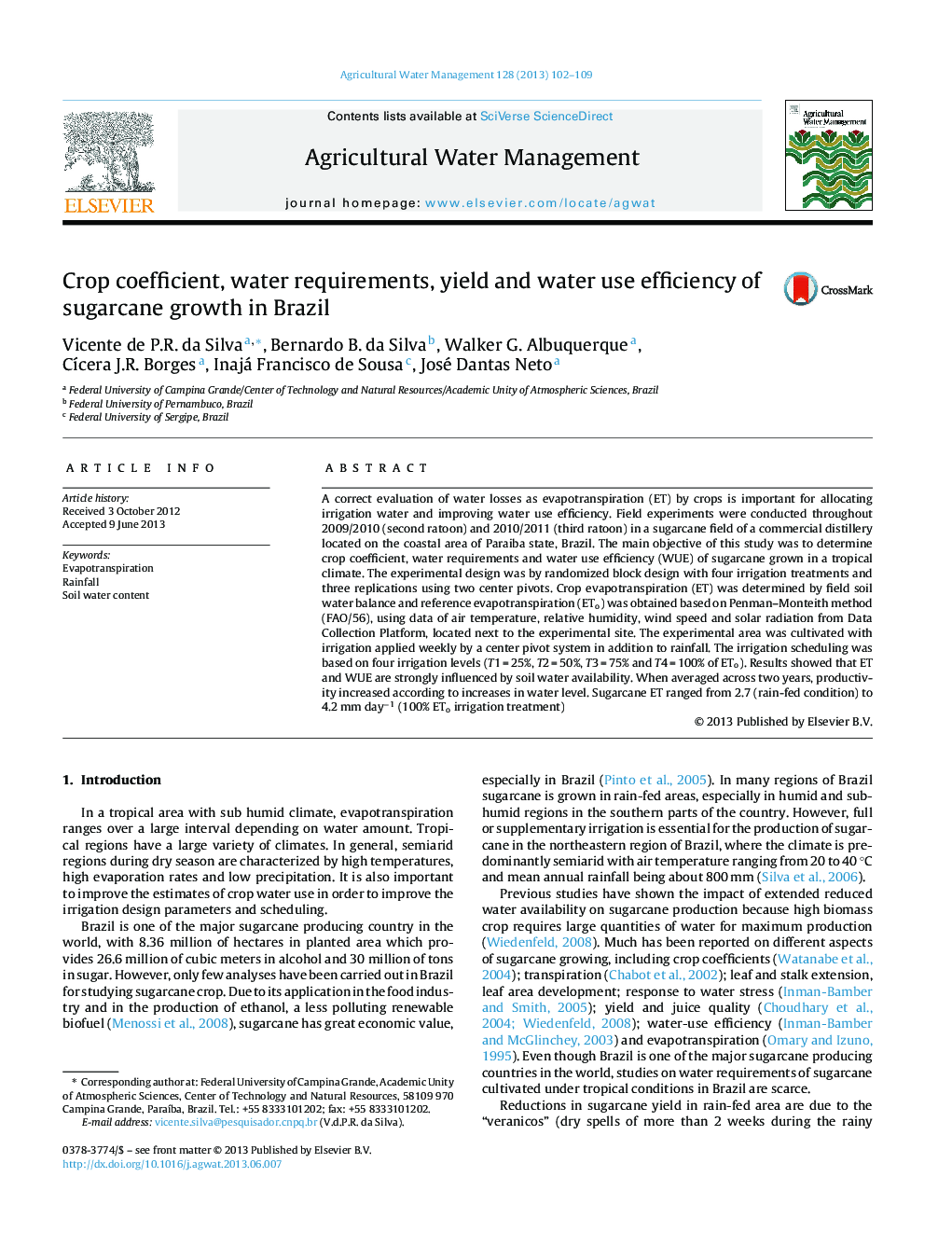| Article ID | Journal | Published Year | Pages | File Type |
|---|---|---|---|---|
| 6364093 | Agricultural Water Management | 2013 | 8 Pages |
Abstract
A correct evaluation of water losses as evapotranspiration (ET) by crops is important for allocating irrigation water and improving water use efficiency. Field experiments were conducted throughout 2009/2010 (second ratoon) and 2010/2011 (third ratoon) in a sugarcane field of a commercial distillery located on the coastal area of Paraiba state, Brazil. The main objective of this study was to determine crop coefficient, water requirements and water use efficiency (WUE) of sugarcane grown in a tropical climate. The experimental design was by randomized block design with four irrigation treatments and three replications using two center pivots. Crop evapotranspiration (ET) was determined by field soil water balance and reference evapotranspiration (ETo) was obtained based on Penman-Monteith method (FAO/56), using data of air temperature, relative humidity, wind speed and solar radiation from Data Collection Platform, located next to the experimental site. The experimental area was cultivated with irrigation applied weekly by a center pivot system in addition to rainfall. The irrigation scheduling was based on four irrigation levels (T1Â =Â 25%, T2Â =Â 50%, T3Â =Â 75% and T4Â =Â 100% of ETo). Results showed that ET and WUE are strongly influenced by soil water availability. When averaged across two years, productivity increased according to increases in water level. Sugarcane ET ranged from 2.7 (rain-fed condition) to 4.2Â mm dayâ1 (100% ETo irrigation treatment)
Related Topics
Life Sciences
Agricultural and Biological Sciences
Agronomy and Crop Science
Authors
Vicente de P.R. da Silva, Bernardo B. da Silva, Walker G. Albuquerque, CÃcera J.R. Borges, Inajá Francisco de Sousa, José Dantas Neto,
